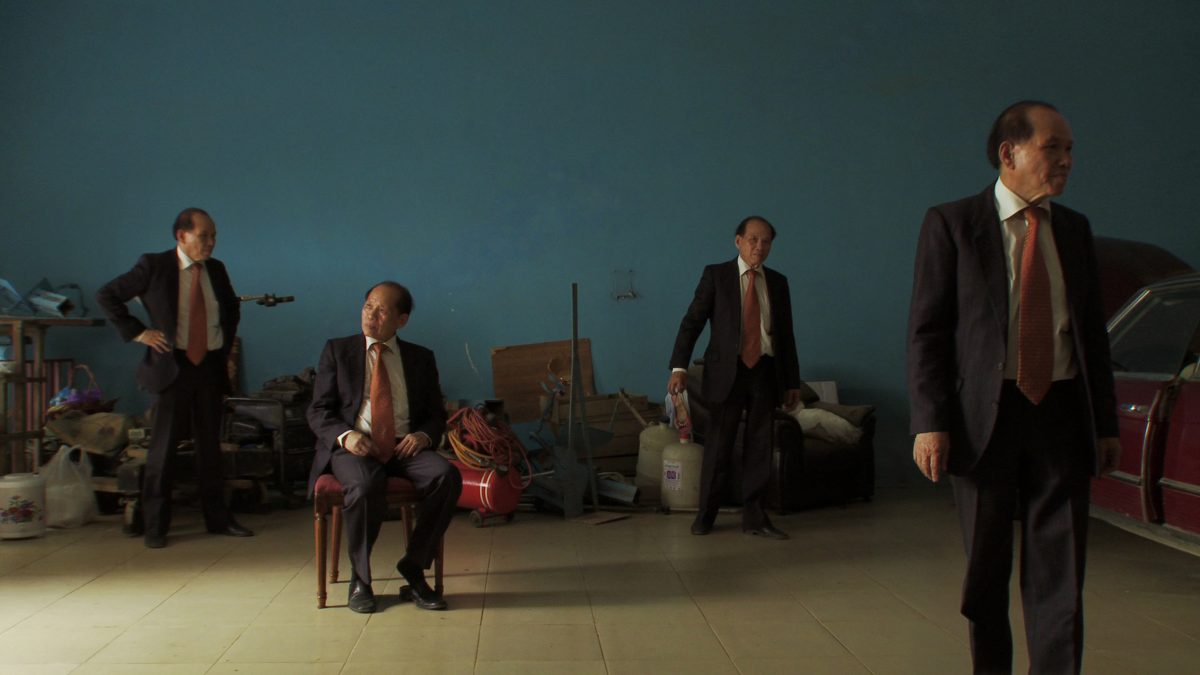Golden Slumbers

Le Sommeil d’or
Davy Chou
France – 2012

Screenplay: Davy Chou
Cinematography: Thomas Favel
Production: Vycky Films Bophana Production Araucania Films CinéCinéma
Language: Khmer, French
Duration: 100 min
Color: Color
Synopsis: An ethnographic documentary, this film consists of interviews with surviving directors and stars of Cambodia’s pre-Khmer Rouge film industry, as well as with enthusiastic cinéphiles who excitedly reminisce about their favorite titles. Much of the film recounts the history of film production and its personalities, from Marcel Camus travelling to Cambodia to shoot Bird of Paradise in 1962, through to Prime Minister Norodom Sihanouk’s inauguration of a national film festival in 1969 with the aim of encouraging local directors. After a period of enormous productivity throughout the following decade, many members of the film industry fled the country with the rise of the Khmer Rouge, and those who stayed perished during the purges, leaving behind only traces of a distant world of fond remembrances.
Notes:
Golden Slumbers is the debut documentary feature for French-Cambodian director Davy Chou, who previously spent time in Cambodia collaborating on film workshops with school students, and later curated a retrospective of surviving Cambodian films from the country’s cinematic golden age. The subject matter of Golden Slumbers encompasses one of the most horrific periods of the twentieth century, but Chou focuses on personal recollections rather than grand history. Chou makes only minimal use of footage from the civil war; instead, anecdotes of hand grenades being tossed into cinemas and the haunted faces of his interviewees tell the story. Among the most affecting recollections are those of director Ly You Sreang, whose affable demeanour soon gives way to a deep-seated pain as he describes abandoning his body of films to certain destruction during his flight to Paris in search of Cambodian star Chouk Rath, and his years spent in France working in the Citroën factory and as a taxi driver.
Such unavoidably sombre moments are leavened by joyful recollections of the films themselves, particularly those delivered by the two film enthusiasts Ouk Silayouth and Lim Vong Thavy, who are content to sit around and reminisce at length about their favourite films. Chou allows his interviewees to conjure imaginings of the films through their words and descriptions: rather than utilise clips from, for instance, Hui Keung’s Crocodile Man (1972), which is available to view in its entirety on YouTube, Chou incorporates a spirited retelling of that film’s protagonist being hit three times on the head and transforming into a crocodile. By withholding the actual footage from his visual track. Chou allows the verbal description of this supernatural event to feed back into the mystical realm of animistic oral tradition. As well as allowing the participants to re-create their films verbally, Chou occasionally puts them through physical re-enactments: multiple images of director Ly Bun Yim appear and disappear from a single camera shot throughout his interview, as Chou employs special effects created by the eccentric director. The decision not to incorporate footage from the films of the period reveals that Chou is less interested in reconstructing the surviving artefacts than he is in probing what is left in the absence of recorded cultural memory. This is confirmed when footage from a recently rediscovered film is projected onto the brick wall of a former cinema, the mortar joints of the wall rendering the image unintelligible. Chou is content to allow the shifting array of colours to play over the textured surface, demonstrating his interest not just in the lives lived in the industry and torn asunder with its dismantling, but also in the physical sites of moviegoing and their shifting status in the flow of history. Chou’s camera surveys many key locations of the former film industry, with cinemas transformed into restaurants, pool halls and, most memorably, a ramshackle residence for sixteen families. In this regard, Golden Slumbers reveals its thematic kinship with Patricio Guzman’s Nostalgia for the Light (2010), a title that would have been equally apt in Chou’s case: both documentaries take place in the wake of human tragedy on an unthinkable scale, discovering an obsession with the objects that remain in the wake of an incomprehensible absence. In Guzman’s film, this search is projected into the stars and into the earth of Chile’s deserts, whereas Chou probes memory amid the collective loss of a cinema and of a people.
Excerpt from Godfrey, Nicholas. “Remembrance Unspooled: Golden Slumbers.” Metro no. 175 (Summer 2013): 68-71.


